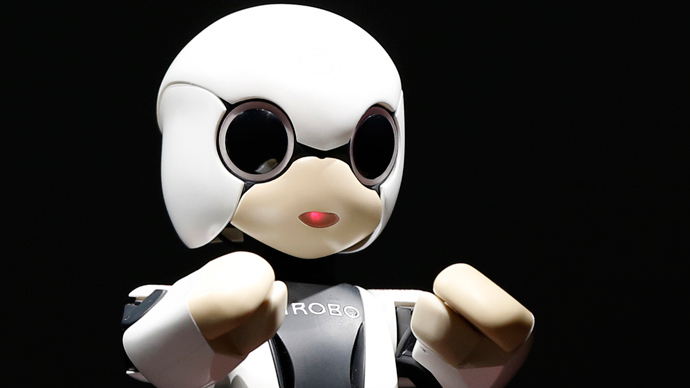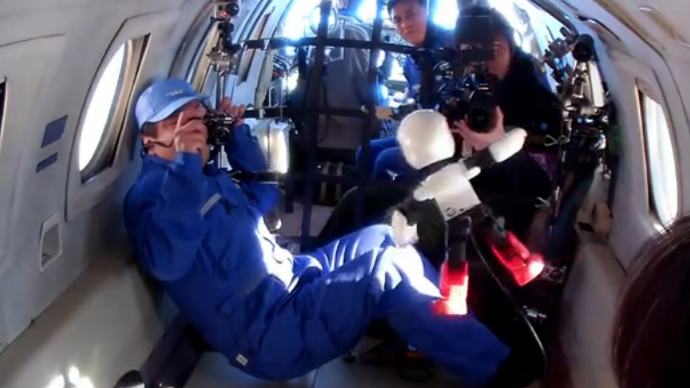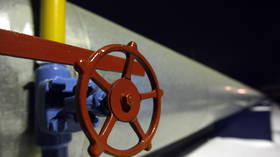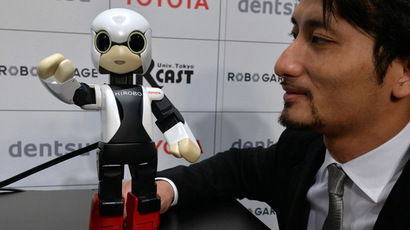One giant leap: Japan’s talking robot arrives at ISS

The International Space Station (ISS) has received its latest arrival in the form of a knee-high Japanese talking robot named “Kirobo” after successfully docking a supply ship launched from Tanegashima Space Center on August 3.
The little robot is equipped with voice and facial-recognition technology and was included along with a delivery of 3.5 tons of supplies and equipment to the crew currently manning the ISS. Japanese astronaut Koichi Wakata will blast off on his mission to the space station with six crew members in November, becoming Japan’s first ISS commander.
Kirobo, which stands 34cm tall, was built by Toyota. It features
an all-white body with bright red boots and bulbous expressive
eyes, and is meant to provide companionship for Wakata. Its
design is said to have been inspired by the legendary Japanese
manga and anime character “Astro Boy.”
According to the robot’s developer, Tomotaka Takahashi, Kirobo
will “remember Mr. Wakata's face so it can recognize him
when they reunite up in space.”
During its mission aboard the ISS, Kirobo will also be
communicating “Mirata” - its twin robot back on Earth.
The Kirobo and Mirata project was the result of a collaboration
between Toyota, Japanese advertising company Dentsu, and
Takahashi of the University of Tokyo’s Research Center for
Advanced Science and Technology.
At a press event ahead of his launch, Kirobo told reporters:
“One small step for me, a giant
leap for robots.”

The robot’s creators say that their biggest technical hurdle was
preparing Kirobo to operate in a zero-gravity environment so that
it could move and interact with crew members.
Kirobo, whose name was derived from the Japanese words for
“hope” and “robot,” will feature
natural-language processing. It will record conversations it has
with astronaut Koichi Wakata as well as serve as a link for
messages sent to the astronaut from the flight control room.
The robot’s child-like appearance belies its more important goal,
which is to explore whether it can become an emotional anchor of
sorts for astronauts who are isolated for long periods.
"The Kibo robot has a special mission: To help solve the
problems brought about by a society that has become more
individualized and less communicative... With a new style of
robot-human interface, perhaps a way to solve this problem could
be found," said a statement on the Kibo Robot Project
website.
Preparing the little robot for life aboard the ISS required a
number of design tests which took place over the course of nine
months. Kirobo was subjected to thermal analysis and
electromagnetic compatibility testing, as well as tests to
determine whether general background noise on board the space
station would interfere with the voice-recognition technology.
Kirobo’s mission is scheduled to carry over into December 2014.

















